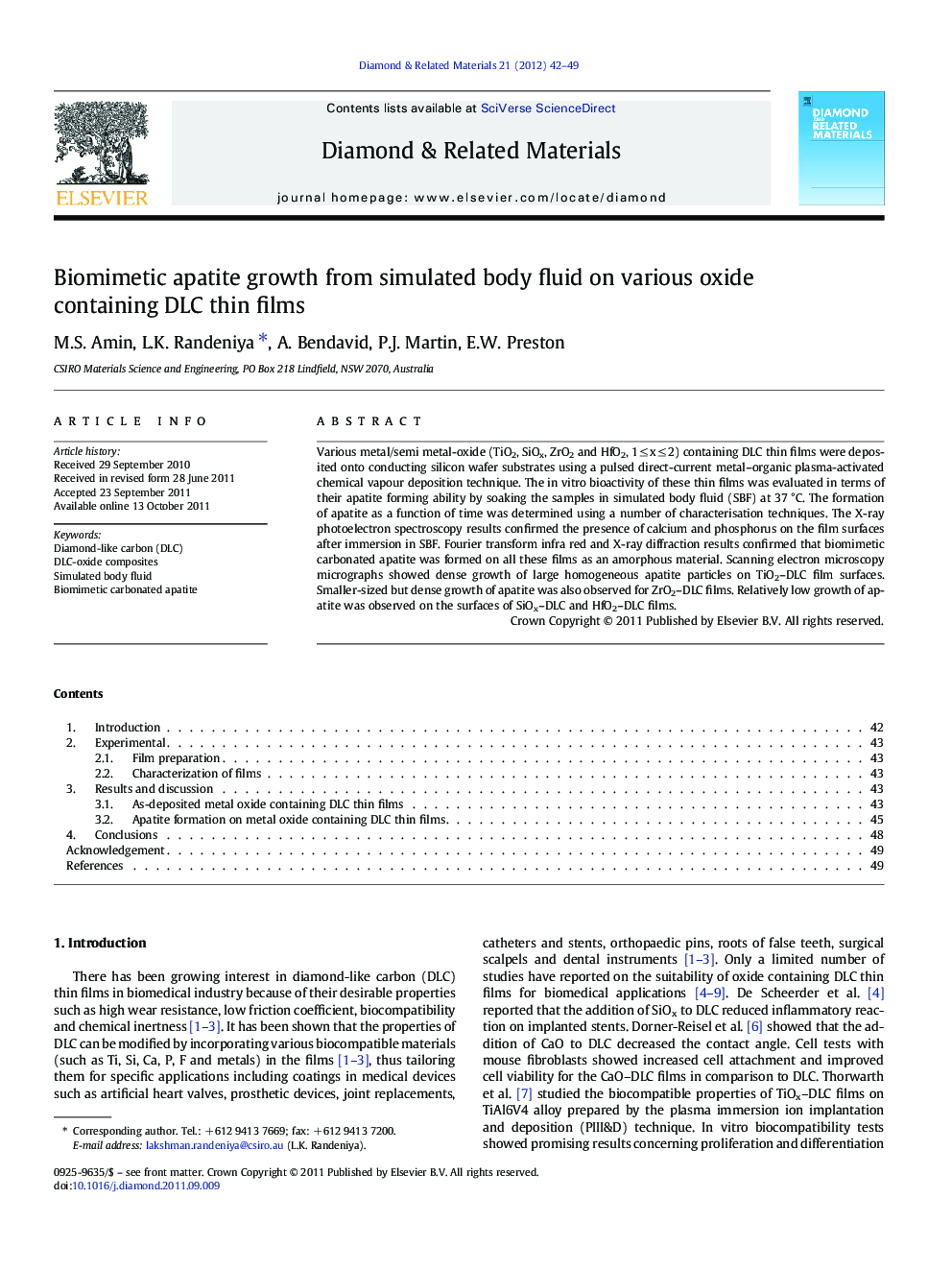| Article ID | Journal | Published Year | Pages | File Type |
|---|---|---|---|---|
| 702768 | Diamond and Related Materials | 2012 | 8 Pages |
Various metal/semi metal-oxide (TiO2, SiOx, ZrO2 and HfO2, 1 ≤ x ≤ 2) containing DLC thin films were deposited onto conducting silicon wafer substrates using a pulsed direct-current metal–organic plasma-activated chemical vapour deposition technique. The in vitro bioactivity of these thin films was evaluated in terms of their apatite forming ability by soaking the samples in simulated body fluid (SBF) at 37 °C. The formation of apatite as a function of time was determined using a number of characterisation techniques. The X-ray photoelectron spectroscopy results confirmed the presence of calcium and phosphorus on the film surfaces after immersion in SBF. Fourier transform infra red and X-ray diffraction results confirmed that biomimetic carbonated apatite was formed on all these films as an amorphous material. Scanning electron microscopy micrographs showed dense growth of large homogeneous apatite particles on TiO2–DLC film surfaces. Smaller-sized but dense growth of apatite was also observed for ZrO2–DLC films. Relatively low growth of apatite was observed on the surfaces of SiOx–DLC and HfO2–DLC films.
► MOPACVD technique was used to deposit TiO2–DLC, SiOx–DLC, ZrO2–DLC and HfO2–DLC films. ► We examined the differences in apatite formation from SBF on these films. ► A carbonated biomimetic apatite growth was observed on all surfaces. ► The largest homogeneous apatite particles were grown on TiO2–DLC surface.
